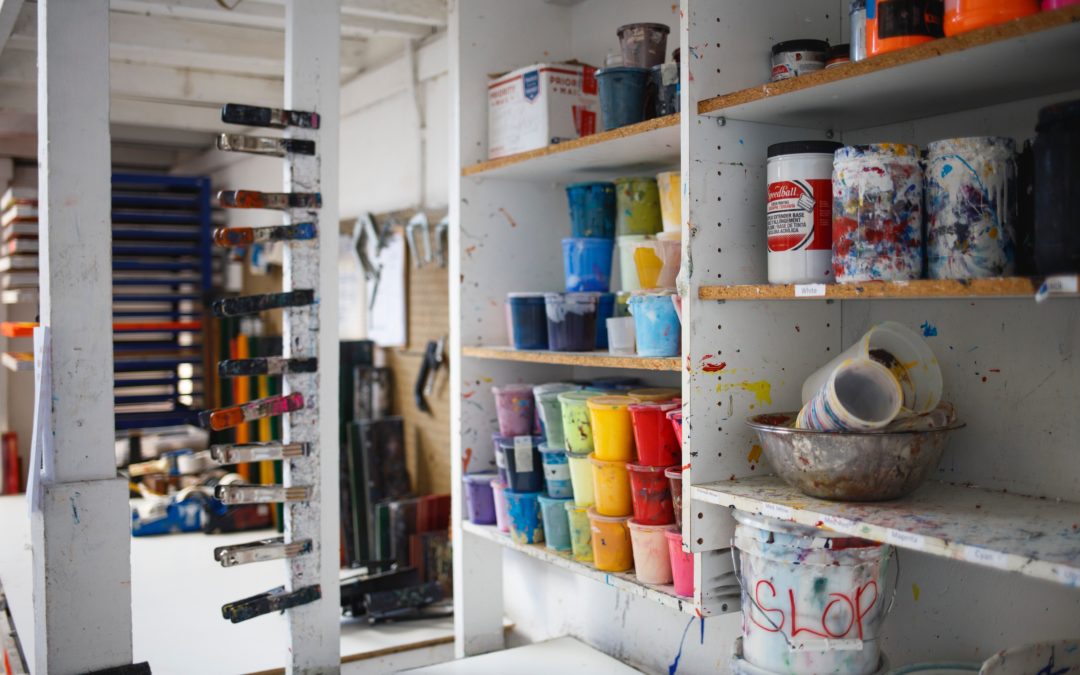In conversation with VAA Directors, Laura O’Hare and Shirley-Ann O’Neill.
As the world re-emerges from the pandemic, consumers have felt the repercussions of global inflation increasing the cost of living. Everyday items, including the cost of fuel and food, have gone up in price, which means consumers have less discretionary spending. Add this to the backdrop of the ongoing tragic war in Ukraine, changes in heads of governments, recent times have been trying on a global scale.
So, what can artists do in times of crisis?
Firstly, remember that there is a silver lining. Everything historically goes in economic cycles. History shows that inflation will stabilise, governments will tackle the energy crisis and peace will return, increasing consumer confidence. The world will always need art. It is possible to earn an income in times of recession. Sometimes, artists may even find that their income can increase. This was demonstrated during the pandemic, with people looking for human connection more than ever.
During uncertain times, what can you as an artist, do to help art buyers?
Retaining Existing Art Buyers
Many art professionals agree that at a time when consumers’ budgets are tight, artists must stay relevant. Art is not a necessity in the same way as food or energy, so therefore it is important to approach art sales and marketing sensitively. How do artists continue to drive art sales and keep interested in your art when everything seems uncertain?
Shirley-Ann O’Neill, Director at VAA explains ‘Artists should adopt a different approach to still drive sales or interest in their work. Traditionally artists produce art for themselves, with little consideration for customer interests. The right customer will connect with your artwork. However, in uncertain times if your goal is to sell your work, you need to be aware of public reception. Grappling with relevance and being in tune with your customer’s tastes is more important than ever. Focusing your time on your existing art buyers and a clear niche will pay dividends. A well-defined process for managing previous art buyers will be essential if you do not already do this.’
‘Think about the art buyers and followers with whom you have long-standing relationships and have shown you loyalty; prioritise returning that loyalty before you try to get new ones. Make sure your pricing is competitive compared to your peers and look for ways to add value or thank them. Offer your buyers a personal service. Finally, it may also be a time to offer limited edition prints of original artworks to make your work more financially assessable. Or offer a tactical exclusive offer such as free delivery.’
Reward loyalty. Simple ideas to retain connections:
- Send a personalised postcard for birthdays or a festive greeting card
- Hand-written messages when delivering artwork or a thank you note
- Invite previous buyers to your exhibitions or offer a studio visit, whereby they can see you create live art
- Regular email communications
- Invitation to previews of work before it goes on general sale
- In-person coffee, lunch or walk etc.
While it seems as though it requires a bit of promotional effort, using this tactic is one of the finer ways to expand your client base and secure new opportunities for your art business during times of recession.
Your List
Artists who successfully ride out the highs and lows, not only commit to growing their email list, but they make it a priority. Don’t wait until something unfortunate forces you to start growing your list (like a drop in income), you are missing out on a valuable opportunity. The people who opt-in to your list will most certainly be amongst your biggest supporters, just by the simple fact, that they signed up. Growing a list is something that savvy artists do well. They share the process of their art through their list and people become co-collaborators, rather than just buyers. Even if they don’t read most of your emails, they will most certainly see them drop into their inbox, so you will be in their thoughts.
Passion Beyond Profit
An effective way to stay relevant is to look for ways to communicate your story and purpose as an artist. You can still be sensitive to what is happening globally and sell your work. In times of crisis, artists use their work to support charities and be effective on people mentally. This in turn increases their visibility and potential sales. Nurture and build your tribe, including your clients. A key secret to selling art without selling out is to put people first and sell art second. It is central to let people emotionally connect with art beyond the potential ‘sale’.
VAA Director, Laura O’Hare advises ‘Staying connected to your artist community will help keep you positive, and open to income opportunities. You cannot afford not to be part of an artist’s community currently. For example, over 20,0000 artists globally have accessed artist support at the VAA in recent times and the numbers continue to grow daily. Ensure you cover your marketing basics. Including: keeping your website up to date (including SEO) so you can continue to attract potential new buyers. Remember, a recession does not always have the same result for everyone. Occasionally, people have financial savings and higher incomes and will still be purchasing art. By focusing on relevancy and your passion, you will remain at the forefront of customers’ minds. If your budget affords it, continue to do exhibitions and Art Fairs, but do your due diligence first. There will still be people impulse buying or needing to buy art for special occasions or investment purposes.
To learn more about how you can create income streams in uncertain times, check out our upcoming events.
